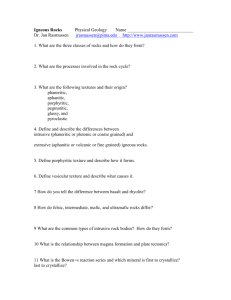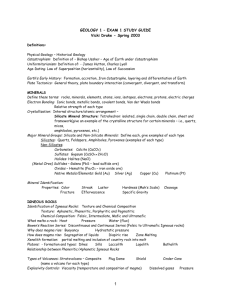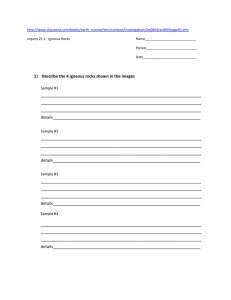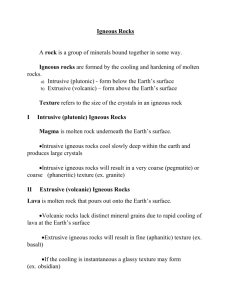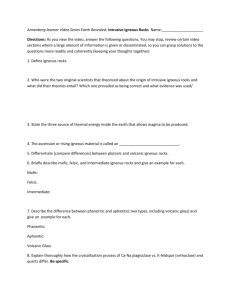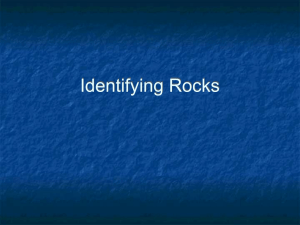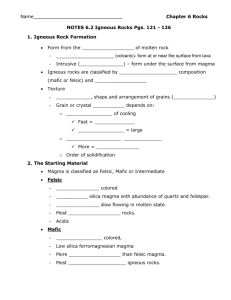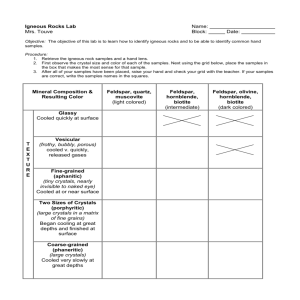Chapter 3 igneous rock review sheet
advertisement
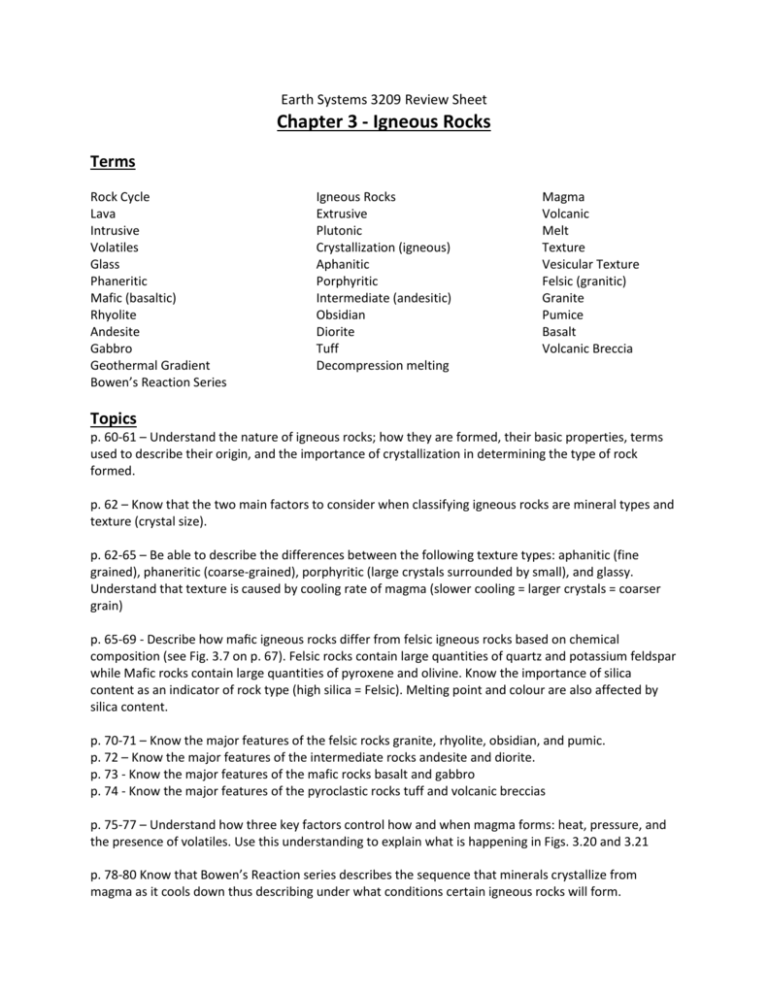
Earth Systems 3209 Review Sheet Chapter 3 - Igneous Rocks Terms Rock Cycle Lava Intrusive Volatiles Glass Phaneritic Mafic (basaltic) Rhyolite Andesite Gabbro Geothermal Gradient Bowen’s Reaction Series Igneous Rocks Extrusive Plutonic Crystallization (igneous) Aphanitic Porphyritic Intermediate (andesitic) Obsidian Diorite Tuff Decompression melting Magma Volcanic Melt Texture Vesicular Texture Felsic (granitic) Granite Pumice Basalt Volcanic Breccia Topics p. 60-61 – Understand the nature of igneous rocks; how they are formed, their basic properties, terms used to describe their origin, and the importance of crystallization in determining the type of rock formed. p. 62 – Know that the two main factors to consider when classifying igneous rocks are mineral types and texture (crystal size). p. 62-65 – Be able to describe the differences between the following texture types: aphanitic (fine grained), phaneritic (coarse-grained), porphyritic (large crystals surrounded by small), and glassy. Understand that texture is caused by cooling rate of magma (slower cooling = larger crystals = coarser grain) p. 65-69 - Describe how mafic igneous rocks differ from felsic igneous rocks based on chemical composition (see Fig. 3.7 on p. 67). Felsic rocks contain large quantities of quartz and potassium feldspar while Mafic rocks contain large quantities of pyroxene and olivine. Know the importance of silica content as an indicator of rock type (high silica = Felsic). Melting point and colour are also affected by silica content. p. 70-71 – Know the major features of the felsic rocks granite, rhyolite, obsidian, and pumic. p. 72 – Know the major features of the intermediate rocks andesite and diorite. p. 73 - Know the major features of the mafic rocks basalt and gabbro p. 74 - Know the major features of the pyroclastic rocks tuff and volcanic breccias p. 75-77 – Understand how three key factors control how and when magma forms: heat, pressure, and the presence of volatiles. Use this understanding to explain what is happening in Figs. 3.20 and 3.21 p. 78-80 Know that Bowen’s Reaction series describes the sequence that minerals crystallize from magma as it cools down thus describing under what conditions certain igneous rocks will form.
